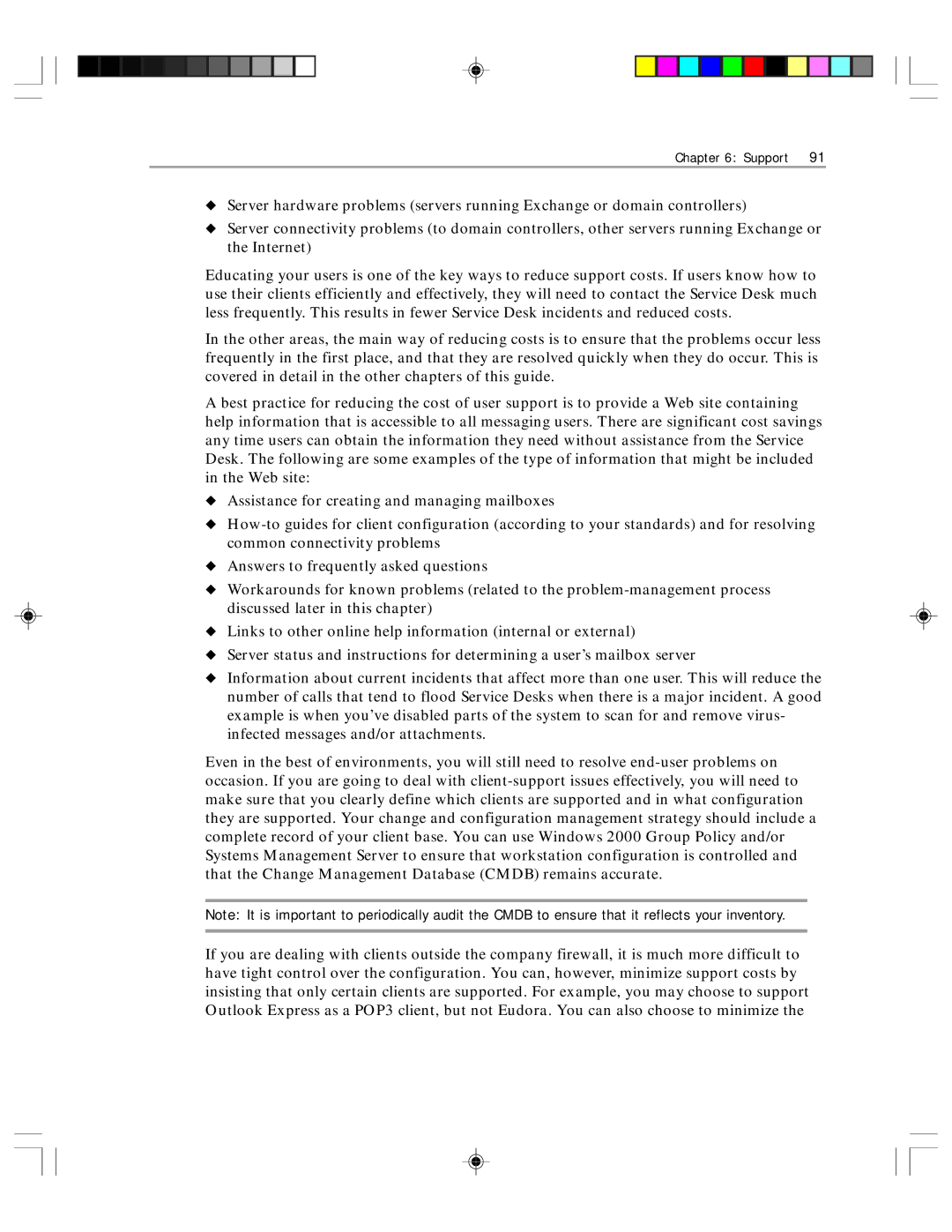
Chapter 6: Support 91
◆Server hardware problems (servers running Exchange or domain controllers)
◆Server connectivity problems (to domain controllers, other servers running Exchange or the Internet)
Educating your users is one of the key ways to reduce support costs. If users know how to use their clients efficiently and effectively, they will need to contact the Service Desk much less frequently. This results in fewer Service Desk incidents and reduced costs.
In the other areas, the main way of reducing costs is to ensure that the problems occur less frequently in the first place, and that they are resolved quickly when they do occur. This is covered in detail in the other chapters of this guide.
A best practice for reducing the cost of user support is to provide a Web site containing help information that is accessible to all messaging users. There are significant cost savings any time users can obtain the information they need without assistance from the Service Desk. The following are some examples of the type of information that might be included in the Web site:
◆Assistance for creating and managing mailboxes
◆
◆Answers to frequently asked questions
◆Workarounds for known problems (related to the
◆Links to other online help information (internal or external)
◆Server status and instructions for determining a user’s mailbox server
◆Information about current incidents that affect more than one user. This will reduce the number of calls that tend to flood Service Desks when there is a major incident. A good example is when you’ve disabled parts of the system to scan for and remove virus- infected messages and/or attachments.
Even in the best of environments, you will still need to resolve
Note: It is important to periodically audit the CMDB to ensure that it reflects your inventory.
If you are dealing with clients outside the company firewall, it is much more difficult to have tight control over the configuration. You can, however, minimize support costs by insisting that only certain clients are supported. For example, you may choose to support Outlook Express as a POP3 client, but not Eudora. You can also choose to minimize the
